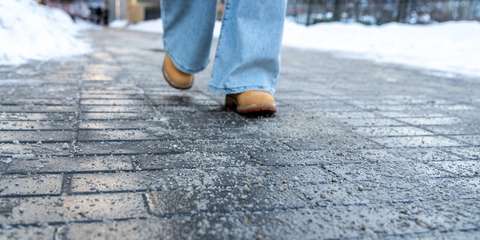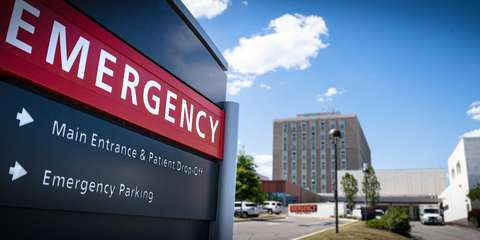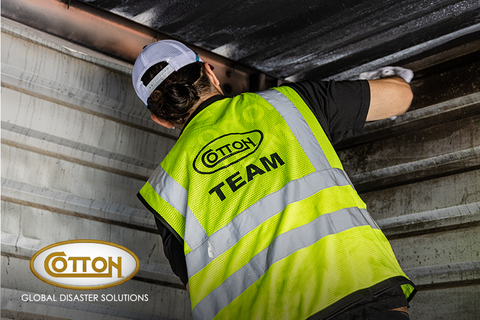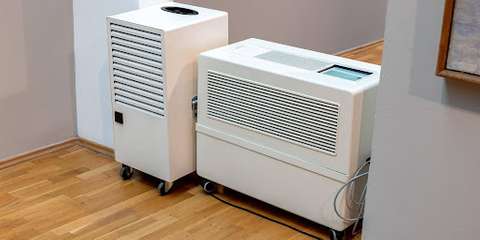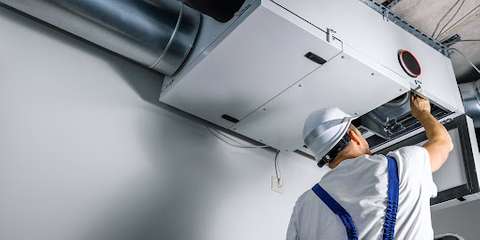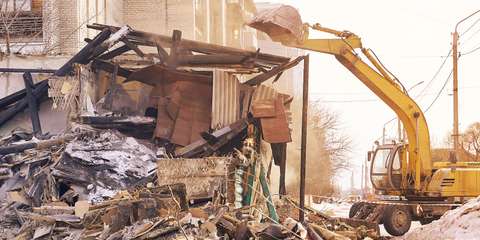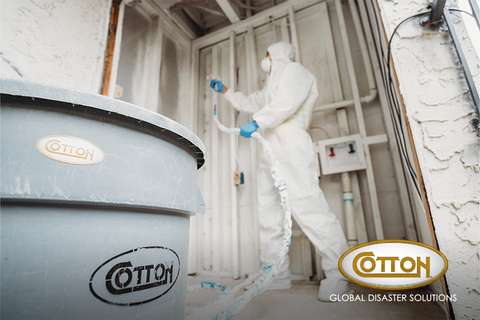News
Winter Storm Preparedness for Commercial Properties: The Dangers of Deferring Maintenance
When it comes to winter storm preparedness for commercial properties, the biggest threat usually isn't the snow, ice or freezing rain itself — it's the small maintenance issues that have been quietly piling up all year. A loose piece of flashing, a clogged drain or a hairline crack in a pipe might not seem urgent in October, but once temperatures drop and storms roll through, those minor issues can turn into major catastrophes.
If you manage or own commercial property, you're not just maintaining a building. You're protecting people, inventory, equipment and revenue. A roof leak over key equipment, frozen pipes in a tenant space or an inaccessible entrance after a storm can disrupt operations in a matter of hours. The frustrating part? Most of these problems are preventable with the right prep.
This is why deferring maintenance is so risky. Winter has a way of exposing everything that's been ignored. The question isn't whether your property will face harsh conditions, but whether it's been maintained well enough to withstand them.
moreHow Cotton GDS Supports Healthcare Emergency Preparedness and Disaster Recovery
Hospitals and healthcare facilities cannot afford setbacks when disaster strikes. Cotton Global Disaster Solutions (Cotton GDS) delivers healthcare emergency preparedness and disaster recovery services that keep your operations running and your patients safe.
Our team supports administrators, facility managers and medical staff with rapid response, specialized equipment and compliance-focused recovery plans. With proven experience in high-pressure, disaster-based environments, Cotton GDS is the trusted partner healthcare leaders call to restore stability fast.
moreThe Dangers of Soot and How to Professionally Remove It
The devastation from a workplace fire can cause far-reaching and lingering effects that impact your property even when the flames have died down. In addition to the immediate destruction from the fire itself, the remaining soot and smoke damage can pose complex cleanup issues for business owners.
After a fire, soot can coat your property and threaten your building and your staff’s health. Cleaning this substance safely and effectively can be as difficult as it is dangerous, especially when attempted without professional assistance.
Before attempting to navigate smoke and soot cleanup, learn more about this material, the impactful dangers of it and the benefits of using a professional soot removal company to overcome this issue.
moreTools of the Trade: Restoration Equipment That Gets Businesses Back Fast
When disaster strikes, the right restoration equipment can mean the difference between costly downtime and a quick return to business. Cotton GDS uses commercial-grade tools that offer speed and reliability in fire and water damage restoration and document recovery.
Our expert teams deploy specialized gear that targets each type of damage with industry-proven efficiency. With decades of experience and a nationwide response network, Cotton GDS restores commercial spaces with professionalism and urgency. Here’s how.
moreCotton’s Business Intelligence Center: Smarter Insights, Stronger Recovery
What does advanced readiness mean to you? For us at Cotton Global Disaster Solutions (Cotton GDS), it means giving you peace of mind knowing that no matter what disaster strikes, recovery won’t just happen — it will happen faster. Accelerated recovery is what we aim for in our line of work. Disasters don’t take days off, and neither do we.
That’s why we built the Business Intelligence Center (BIC), a powerful hub with 24/7 capabilities and advanced analytics that transforms real-time information into actionable insights, helping businesses stay ahead of disruptions and get back on their feet quickly. Business continuity is one of the critical factors that keep businesses thriving even after unpredictable events.
moreThe Importance of Cleaning Air Ducts After Hurricanes for Reduced Mold Risk
After a hurricane hits, it’s easy to become overwhelmed and overlook a few critical parts of the repair process. Air duct cleaning, though one of the most crucial elements of post-hurricane cleanup, isn’t always a priority for property owners. That’s why we’re here.
Cotton Global Disaster Solutions specializes in cleaning air ducts after a storm to help maintain indoor air quality and support long-term mold prevention in your business. Below, we’ll talk in-depth about why timely duct maintenance matters and how Cotton GDS can help protect your building and the people inside it.
moreESSENTIAL POST-HURRICANE SAFETY TIPS FOR BUSINESS OWNERS
After a hurricane, navigating the devastation left behind can be as dangerous as weathering the storm itself. Downed power lines, flooded streets and widespread debris can cover communities. Despite the widespread destruction, commercial property owners are likely eager to return to their facilities and assess their facility’s damage.
However, reentering a storm-stricken region without proper safety is only a recipe for further disaster. To safely return to your commercial property or business following a tropical storm event, consider these key post-hurricane safety tips before making the trip.
For rapid restoration navigating the aftermath of a hurricane for your commercial property, trust Cotton Global Disaster Solutions (Cotton GDS) for turnkey solutions that get you back to business.
moreUnderstanding the Reconstruction Process After Hurricane Damage
Hurricanes can bring devastating physical damage that can be tough to address on your own. While navigating the reconstruction process is critical, it’s also complex. Thankfully, Cotton Global Disaster Solutions offers expert, full-service solutions for hurricane damage repair to help you recover faster, safer and stronger.
Here’s what you can expect when restoring your property after a storm.
more
MOLD REMEDIATION FOR YOUR COMMERCIAL PROPERTY THIS HURRICANE SEASON
Hurricanes are notoriously unpredictable, and the damage they leave behind can range from minor to catastrophic. While structural and water damage are often immediately visible, other consequences like mold can be more insidious, damaging not only the structural integrity of buildings, but also potentially affecting the health and well-being of the residents. Whether in commercial or residential properties, mold prevention and remediation is a critical component of the restoration process.
For nearly 30 years, Cotton Global Disaster Solutions has been a trusted provider of mold remediation and cleaning services, delivering effective solutions to businesses of all sizes.
moreCOTTON RELIEF’S RESTORATION STATIONS RESTORED HOPE ACROSS CENTRAL TEXAS
During July 2025, Central Texas experienced catastrophic flooding that left destruction and incredible tragedy in its wake. With communities destroyed, residents were left to pick up the pieces and begin a long road to recovery.
The Cotton Companies mobilized, ready to begin assisting the area with total recovery solutions. However, we knew this level of devastation called for an even deeper level of restoration. Cotton’s unique capabilities and dedication to our neighbors inspired the team to take relief efforts further than ever before, bringing meaningful moments of joy to one of the nation’s darkest moments.
Cotton deployed the Cotton Relief Restoration Stations as a way to deliver hope. These mobile units traveled across the Hill Country, stopping at residents’ homes to restore personal keepsakes, treasured mementos and other water-damaged items. Our crews professionally cleaned beloved belongings that were affected by the flood or had simply tarnished over time. Cotton’s commercial-grade equipment and efficient processes allowed the teams to preserve personal items with professionalism and tact.
By allowing these dearly held pieces of the past to shine again, Cotton sought to bring a small symbol of stability for those whose world was crushed by the disaster. Whether polishing a generational jewelry item, wiping down an irreplaceable fine china set or making family furniture feel new, our crews helped residents take a step in the right direction and begin healing.
more
